Terms and procedure for cleaning ventilation chambers and ducts: norms and procedure for cleaning
The ventilation system has a huge impact on human health, since people spend most of their lives in buildings: they live in apartment buildings, work in offices or enterprises, visit cinemas, museums, and large shopping complexes. That is why the cleanliness of ventilation should be closely monitored, and the regulated cleaning periods for ventilation chambers and ducts must be strictly observed.
In this article, we will consider in detail the regulatory requirements and rules that relate to the procedure for cleaning ventilation systems, the timing and frequency of these works.
The content of the article:
Ventilation Cleaning Acts
Due to the importance of solving the issue of cleanliness of ventilation, a number of laws, GOSTs and regulations have been developed that most accurately regulate the timing, frequency and procedure for cleaning ventilation systems.
Considered fundamental Federal Law No. 52 dated March 30, 1999 "On the sanitary and epidemiological well-being of the population."
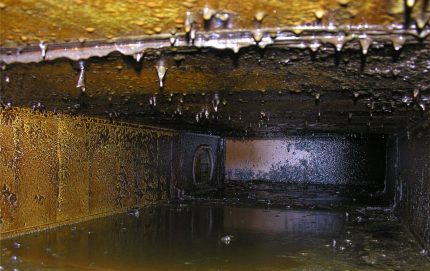
Articles of Federal Law N 52 concerning ventilation systems regulate the following:
- All citizens (both individuals and individual entrepreneurs and legal entities) are entitled to receive information on compliance with statutory norms and rules that apply to ventilation systems. The law also obliges them to contribute and take part in carrying out work in order to implement these standards.
- The law defines a range of requirements, the fulfillment of which is necessary to maintain sanitary and epidemiological standards in buildings of all types where crowding occurs.
- The measures and measures that should be taken to maintain a healthy atmosphere in the room are identified.
- The procedure for regulating and monitoring compliance with the purity of ventilation systems by the state is described.
- Civil liability is foreseen for violation of the sanitary-epidemiological legislation and causing harm as a result of this.
The second most important document is considered Government Decision No. 390on April 25, 2012, “On the fire regime.”
In the rules of this document, articles on ventilation systems require the heads of organizations, owners and tenants of the premises to:
- use ventilation systems only for their intended purpose, prohibiting their dismantling or use for storage inside any product, thereby violating their normal functioning;
- clean ventilation using flammable or flammable liquids;
- ensure that the ventilation is in good condition and clean in accordance with established standards.
A separate article (article 48) defines a series of prohibitions that affect the operation of air conditioning and ventilation systems.
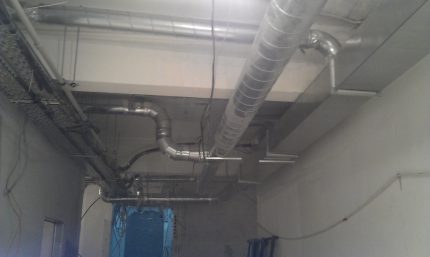
In particular, it is prohibited in any way to close the ducts, openings or exhaust grilles; make unauthorized connection to gas ducts of heating appliances; clean the air ducts from dust, grease and debris by burning.
The decree defines the cleaning period for ventilation systems and the procedure for its implementation:
- cleaning of ventilation systems should be carried out in a fire and explosion safe manner;
- the head of the organization determines the procedure and terms for cleaning filters, ventilation systems, filters and ducts, but it should not be more than one year;
- the results of the work done must be formalized by an act.
These two documents discuss the general provisions and requirements for maintaining cleanliness and timely cleaning of ventilation systems. A more in-depth and specific set of rules and norms is presented in the Order of the Federal State Institution Center for State Sanitary and Epidemiological Surveillance №107 dated August 12, 2004. They will be discussed in the next part of the article.
Rules and stages of cleaning the ventilation system
It is worth noting that, on the basis of Order No. 107, the Decree of the Chief State Sanitary Inspector was subsequently published, which sets forth requirements for observing air exchange standards to maintain a healthy lifestyle.
According to regulatory requirements, ventilation chambers and ducts must be cleaned in stages.
The cleaning process is structurally divided into four stages:
- Inspection of the ventilation system in order to determine the compliance of sanitary standards with established standards.
- Development of a work plan, determination of the method of cleaning and the choice of tactics for cleaning. Additionally, preparatory work should be carried out.
- Direct cleaning ventilation systems.
- Analysis of the work performed and assessment of their effectiveness.
Each of these stages contains its own subparagraphs, the result of the work completely depends on the rigorous implementation of which. At the same time, the cleaning period for ventilation systems should not exceed 30 days from the date of the planned inspection.

Stage # 1 - conducting a thorough examination
It is worth noting that at this stage, attention and pedantry are important in the implementation of measures, because when mistakes are made in the examination and the determination of specific inconsistencies with sanitary and epidemiological standards, the result of the work done depends. In case of errors during the examination, the selected cleaning method may not lead to a positive result.
Inspection of ventilation systems should include:
- verification of all technical documentation of this ventilation system;
- control of the actual compliance of the system design with design data;
- analysis of the condition of all components of ventilation for mechanical damage;
- microclimate research inside the system and measurement of standardized parameters.
An important document, which should reflect all the actions carried out with ventilation during the entire time of its use, is the “Repair and Maintenance Log”.
It contains information about the people who perform maintenance of ventilation systems, specifies the features of maintenance, technical parameters of air performance and planned dates of work that determine the effectiveness of the system.
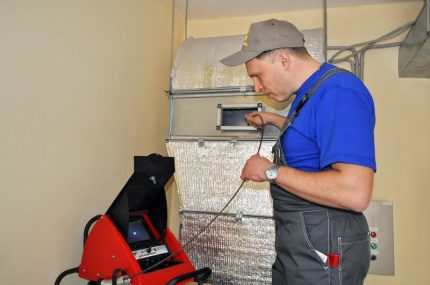
The conclusion of the study of ventilation chambers and air ducts is made in the form of an act of sanitary-epidemiological examination.
Stage # 2 - development of a work plan
On the basis of the act, the second stage of ventilation cleaning is carried out. As a rule, a standard algorithm for developing a plan of further actions should be used.
A sample plan consists of the following items:
- Determining the method and method of cleaning the system.
- The choice of means for disinfection.
- Calculation of the required amount of the selected funds.
- Selection and preparation for work of the necessary equipment (including those installed in the bactericidal ventilation system, operating on the basis of modern ultraviolet technologies).
- Notification of the building administration (homeowners) of the date of work.
- Dismantling the system.
- Cleaning up.
- Disinfection.
- Installation of the selected equipment in the system.
- Installation.
- A record of the work and the preparation of reporting documentation.
- Subsequent assessment of the effectiveness of the work.
Depending on the type of building, its purpose, design features and the degree of contamination of the ventilation system, other elements related to the partial replacement of system components can be added to this plan.
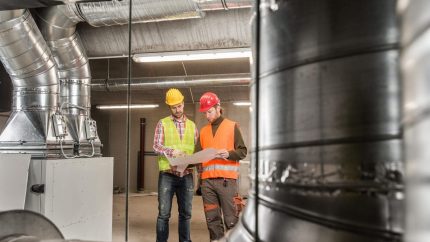
After its development, the work plan should be signed by the person responsible for cleaning the ventilation systems, and approved by the established procedure with the head of the local administration.
Stage # 3 - System Cleaning Work
Depending on the specific features and design, the entire range of proposed works is carried out.
Regardless of the choice of cleaning method, work should be carried out in the following sequence:
- Preparation of cleaning products and disinfectant solutions in designated areas.
- Carrying out calculations in the use of funds on each section of the ventilation system. Calculations must be made by a specialist.
- Preparation of ventilation, removal of covers, grilles, ceilings, dismantling of air intake elements. Providing free access to the system.
- Duct cleaning.
- Cleaning control devices - it is not recommended to dismantle them; cleaning should be done at the installation site.
- Cleaning and disinfection filters.
- Fan cleaning - if necessary, soft inserts can be removed.
- Heat exchanger cleaning. It is carried out taking into account their design and only when dismantling from the ventilation system.
- Cleaning the drainage system. In this case, it is worth dismantling the drainage trays.
- Cleaning the inside of the bodies of mixing chambers, air conditioners. When disassembling and cleaning household air conditioners, you should proceed directly according to the instructions attached to these models.
- Drying and assembly of elements of the ventilation system.
Thus, when performing work in accordance with this developed sequence, it will allow for a complete cleaning of the system. Deviation from these points is undesirable.
It is worth noting that after the work is completed, a report is mandatory, in which all the actions performed must be indicated.
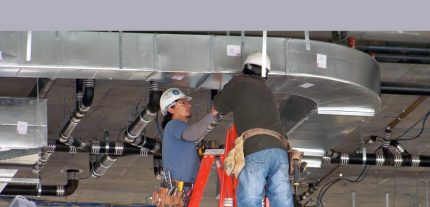
Stage # 4 - evaluation of the completed ventilation cleaning
The final stage of cleaning ventilation systems is to analyze the effectiveness of the work done with the final conclusion on the safe use of ventilation.
In accordance with the established rules, control of the result of work is required at each facility. The cleaning efficiency should be carried out not only by a visual assessment of the absence of contamination, but also by special laboratory tests. Only a comparison of such a parameter as “total microbial number”, which is mandatory measured before starting work, will allow us to calculate the degree of residual contamination in the system.
The analysis (intake of the required amount of air) should be carried out at the place of flow of air masses into the room.
Also, in accordance with the standards, the following system surfaces should be examined for the presence of pathogenic elements:
- Filters
- humidifiers;
- cooling towers;
- heat exchangers;
- drainage pallets.
After studying the results and comparing the indicators, the effectiveness of the cleaning and disinfection work is evaluated. The results must necessarily meet the established requirements and standards of the sanitary-epidemiological state.
It is worth noting that these norms for each category of enclosed spaces (industrial, residential, public use) are different.
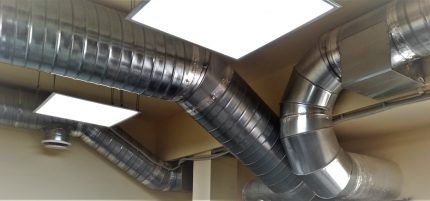
The concept of “clean ventilation system” corresponds to such ventilation, where there are no pathogenic bacteria and microorganisms, and visually the entire system has no visible pollution.
If laboratory tests do not reveal changes or the improvements are insignificant and fall short of established standards, then a decision will be made to re-clean the ventilation system.
Conclusions and useful video on the topic
General concepts about ventilation systems and the need to keep them clean are shown in this video:
The state pays special attention to the ventilation system of all types of buildings, avoiding pollution, which can affect the deterioration of human health. The established inspection dates and the procedure for cleaning allow timely identification and elimination of pollution formed during operation. And only a strict adherence to these rules will allow high-quality work and bring the ventilation system in line with sanitary standards.
Do you want to supplement the above information with useful information or clarify a number of nuances? In a special form below this publication, you can ask questions of interest to our experts or share your opinion about the rules and regulations for cleaning ventilation systems.

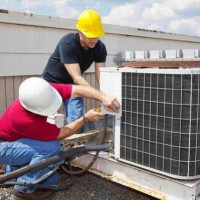 Cleaning ventilation ducts: effective methods and procedures for cleaning the ventilation duct
Cleaning ventilation ducts: effective methods and procedures for cleaning the ventilation duct  Do-it-yourself ventilation of the barn: types of systems, air exchange rates + system arrangement
Do-it-yourself ventilation of the barn: types of systems, air exchange rates + system arrangement 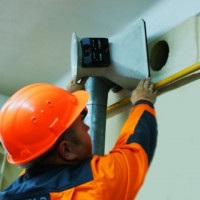 Ventilation cleaning: cleaning the ventilation ducts in an apartment building
Ventilation cleaning: cleaning the ventilation ducts in an apartment building  Nodes of passage of ventilation exhaust shafts: types, features of the choice, application and installation of penetration
Nodes of passage of ventilation exhaust shafts: types, features of the choice, application and installation of penetration  How to clean the ventilation in the apartment with your own hands: suitable tools and work procedures
How to clean the ventilation in the apartment with your own hands: suitable tools and work procedures 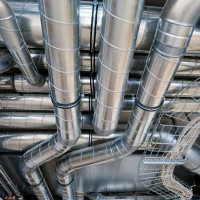 Types of ventilation pipes: a detailed comparative overview of ventilation pipes
Types of ventilation pipes: a detailed comparative overview of ventilation pipes  How much does it cost to connect gas to a private house: the price of organizing gas supply
How much does it cost to connect gas to a private house: the price of organizing gas supply  The best washing machines with dryer: model rating and customer tips
The best washing machines with dryer: model rating and customer tips  What is the color temperature of light and the nuances of choosing the temperature of the lamps to suit your needs
What is the color temperature of light and the nuances of choosing the temperature of the lamps to suit your needs  Replacement of a geyser in an apartment: replacement paperwork + basic norms and requirements
Replacement of a geyser in an apartment: replacement paperwork + basic norms and requirements